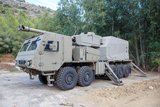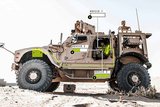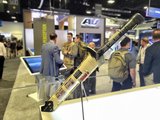How AI tools can reduce fuel usage for maritime platforms
Hefring Marine IMAS tool is designed to decrease fuel usage and CO2 emissions by up to 20%. (Photo: Hefring Marine)
Artificial intelligence (AI) and data-driven tools have been proving themselves crucial to tomorrow’s warfare. Apart from improving precision and lethality for military systems, those technologies can also help to reduce logistic efforts and fuel consumption of maritime platforms in addition to ensuring the safety of crew members.
The use of algorithms enables collecting information in multiple marine areas including vessel’s performance and systems, weather and sea conditions. The analysis of this data allows for optimising operations and identifying the best speed for specific types of environments and operations.
It can also result in better support for commandants and staff and
Already have an account? Log in
Want to keep reading this article?
More from SOF Week 2024
-
![US companies implement diverse strategies to enhance supply chain]()
US companies implement diverse strategies to enhance supply chain
The conflicts in Ukraine and Israel have been driving the US defence industry toward increasing production of platforms and systems.
-
![How propulsion technology can improve vessel performance]()
How propulsion technology can improve vessel performance
Next-generation propellers have been designed to enhance range and speed while reducing fuel consumption.
-
![Galvion introduces BATLCHRG for seamless wireless charging in special operations]()
Galvion introduces BATLCHRG for seamless wireless charging in special operations
Galvion unveiled the BATLCHARG wireless charging system at SOF Week, designed for special operations forces to recharge gear on the move or while stationary, enhancing battlefield power management efficiency.
-
![Booz Allen unveils AR real-time language translation tool]()
Booz Allen unveils AR real-time language translation tool
The Augmented Reality Translate solution enables operators in the field to read foreign language signs and have them translated in an augmented reality headset.
-
![Spectra Group showcases the GENSS tactical radio at SOF Week, enhancing global special operations communications]()
Spectra Group showcases the GENSS tactical radio at SOF Week, enhancing global special operations communications
Spectra Group introduced the GENSS tactical radio at SOF Week, designed to enhance global special operations with versatile, secure communication across multiple bands and satellite connectivity.
-
![AeroVironment to “dramatically” increase production of Switchblades]()
AeroVironment to “dramatically” increase production of Switchblades
The company plans to double or triple production rates for Switchblade 600 and 300 systems.























